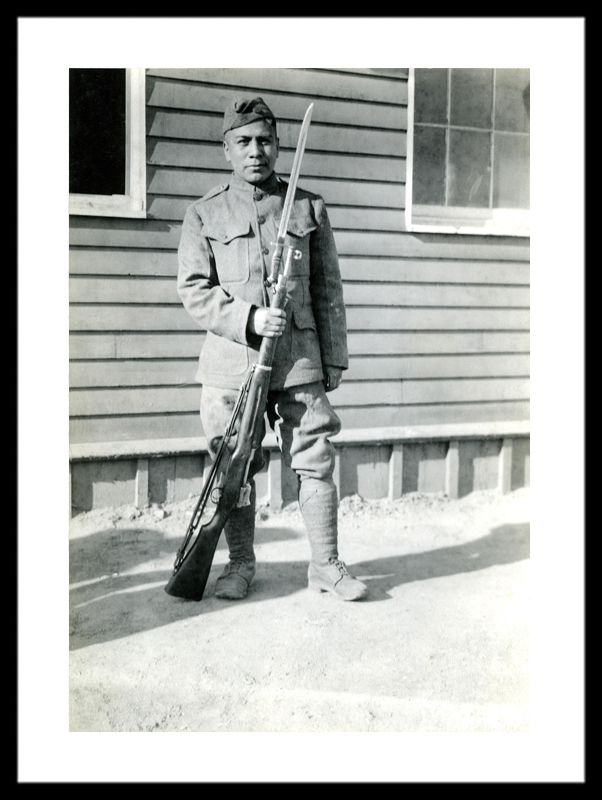Browse Exhibits (3 total)
In Their Own Words: Native Americans in World War I
We invite you to read stories and commentary written by North American Indians who served in the military during the First World War, and look at photos of these and other soldiers who returned to the US after the war.
These words and pictures are part of the Wanamaker Collection, a unique collection of images and documents dating from the early 20th century.
After a very brief summary of United States involvement in the war, we will explore how the documents and photographs in the Wanamaker Collection provide perspectives on Native American participation.

W6345. “Peters, Ewing at attention with bayonet.” April 2, 1919, Camp Merritt, NJ. Joseph K. Dixon, photographer.
Hózhó: Navajo Beauty, Navajo Weavings
In the Navajo way of approaching the world there are relationships, balance, and harmony in everything. People, places, animals, things, and the wider universe exist together—ideally in a state of balance and harmony often referred to as Hózhó in the Diné bizaad (Navajo) language.
Often translated simply as beauty and balance, Hózhó refers to far more than the physical beauty or aesthetic of an object. It is a complicated concept that emphasizes ways in which the world is interconnected and balanced between the static and changing, the part and the whole, and the physical and spiritual. Though each individual expresses Hózhó in personal ways, we can see some outward signs of it in the Navajo weavings displayed here. Through color, pattern, and more, ideas of Navajo beauty are woven into the very fabric itself.
The Art of Navajo and Zuni Jewelry
The Hanawalt collection is comprised of 89 pieces of jewelry from Native American Pueblo Peoples a part of the Zuni or Navajo tribes. The people of Zuni and Navajo are located in the Southwest of the United States, with many of the identified craftspeople living in New Mexico and Arizona. This collection was received in 2019 by Barbara Hanawalt. A majority of these pieces are from the mid-20th century, specifically the 1950s through the 1970s. This exhibit will focus on 32 pieces from this collection, ranging from belts, to watches, to wrist guards, to necklaces, to bolo ties, to pins, and to rings. This exhibit helps us identify common techniques used in crafting, both in Navajo and Zuni cultures. As well as the types of jewelry that are made, what stones are used, how to tell the difference between Navajo and Zuni work, and some identified Native craftspeople.